Posts tagged with Sound-Design
Here you can find a listing of all posts with the tag Sound-Design on my page.
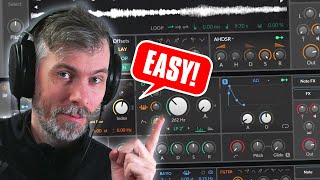
Oct 29, 2025 Tutorial
This tutorial explains how to create classic synth sounds like reese bass, EDM plucks, synthwave bass, rave sounds, pads, e-pianos, and bell tones using basic subtractive and FM synthesis techniques in Bitwig Studio, but the concepts work in any DAW or synthesizer. The key is understanding the foundation of classic sounds, such as detuning saw waves, using filters, modulation, layering samples, and effects, and then customizing or layering them for something more unique. Mastering these fundamental techniques allows producers to easily recognize, modify, and build their own sounds, rather than just copying presets or other artists.

Jun 08, 2025 Tutorial
Resonarium is a free, open-source synthesizer focused on waveguide modeling, allowing users to create complex resonator-based sounds with varied exciter and filter options. Currently in alpha at version 0.0.1, it features a straightforward interface but is prone to bugs and heavy CPU usage when using multiple resonators. Users can experiment with impulses, noise, samples, or external audio, and while it has no manual yet, it is powerful for those interested in physical modeling synthesis.
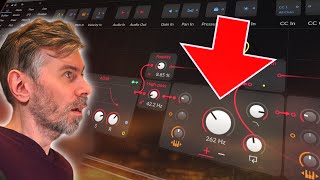
Jan 20, 2025 Tutorial
In this video, I explain how the order and rhythm of overtones are crucial in determining whether a sound is perceived as a single note or a chord. By using devices like the comb filter, we can manipulate and organize overtones to create harmonious sounds when playing chords. I demonstrate various techniques for improving sound quality and harmony, especially when using noise samples and synthesizers, and show how these approaches can lead to better-sounding pads and textures.
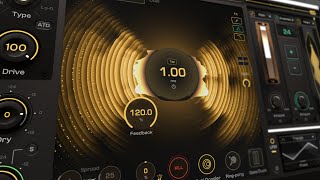
Oct 23, 2024 Tutorial
I recently explored the Ripple Delay plugin by Process Audio and found its ability to integrate effects within the feedback loop, while allowing delay times as low as one millisecond, to be quite impressive. This feature is currently challenging to replicate in Bitwig Studio due to its limitations with buffer size, which affects delay time when effects are included in the feedback chain. I'm hopeful for future updates in Bitwig, but in the meantime, I recommend trying out this plugin to experiment with creating unique soundscapes.
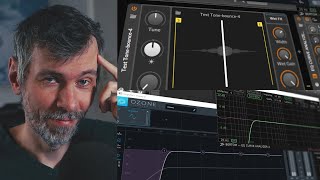
Sep 30, 2024 Tutorial
In this video, I demonstrated how to clone EQ settings using impulse responses, showing the process with tools like an EQ curve analyzer, Ozone 8 EQ, and a convolution device. By recording the output of the Ozone 8 and using a test tone or Dirac signal, I showcased two methods to replicate the linear phase EQ setting. This technique is useful especially if you don't have a built-in linear phase EQ in your DAW like Bitwig.

Sep 27, 2024 Tutorial
In this video, I explore ways to recreate kick drums using only native devices in Bitwig Studio by separating and synthesizing the low-end sine wave from a noisy kick sample. I demonstrate using filters, the Harmonic Split device, and the FX Grid to analyze pitch and volume, ultimately re-synthesizing the low end while discussing the challenges of persisting data within Bitwig. Despite some limitations, such as the inability to save pitch envelope data, I show that this method can effectively replicate kick drum sounds.
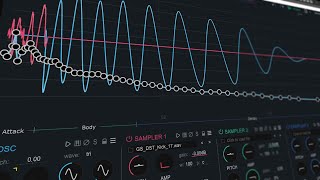
Sep 20, 2024 Tutorial
In today's video, I'm introducing the Kick Ninja VST plugin, which stands out from other kick drum synthesizers because it allows you to recreate kick drums from samples using AI and features pitch tracking for customizable 808 and trap sounds. You can drag in samples to analyze and mimic the pitch envelope and attack phase, and there's also a useful export feature to easily drag samples into your DAW. The plugin includes typical oscillator and sampler functions, along with distortion and compression, making it a versatile tool for creating unique kick sounds.

Sep 19, 2024 Tutorial
In today's video, I explore how to create cyberpunk, dark techno, and 90s Prodigy-style sounds using basic subtractive synthesis techniques, focusing on raw sounds and heavy distortion. I walk you through setting up a monophonic saw wave, creating a repetitive bass pattern, and adding various effects like LP filtering, diode distortion, and bit reduction to achieve a signature cyberpunk vibe. Lastly, I show how to complement the synths with simple drum patterns and side-chaining for added depth and rhythm, and mention that the project file will be available on my Patreon.
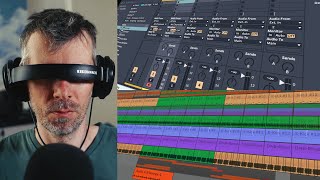
Sep 01, 2024 Tutorial
In this video, I demonstrate two tips in Bitwig Studio. The first tip is about adding dirtiness to kick drums using either distortion, noise modulation, or using the EQ with a render modulator. The second tip is about creating a mono effect below a certain frequency using the mid-side split and a high pass filter.
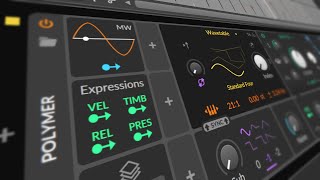
Jul 19, 2024 Tutorial
In this video, I show you how to easily synthesize hi-hats using a normal subjective synthesizer like Polymer in Bitwig. By adjusting settings like detuning, unison, and adding noise, you can create a metallic sound with different velocity and filter expressions. To avoid CPU spikes, it is recommended to sample the hi-hats and use them in your project.
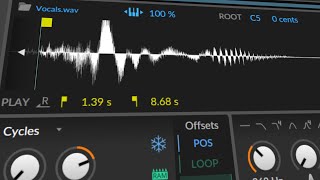
Jul 08, 2024 Tutorial
In this video, I demonstrate how to generate tonal sounds from random noise using the Cycles mode in my sampler. By manipulating the grain size and key tracking, I can create different pitches and waveforms. This technique allows for easy and flexible sound design, making it perfect for creating ambient pads and other tonal sounds.

Apr 12, 2024 Tutorial
In this video, I discovered a new technique for creating kick drums inside Bitwig's grid. By modulating the phase input of a sine oscillator with an AD signal and multiplying it by -10, the kick drum's tail end stays in place even when changing the pitch envelope. This allows for easy alignment with bass sounds and provides fast control over the attack phase of the kick drum.
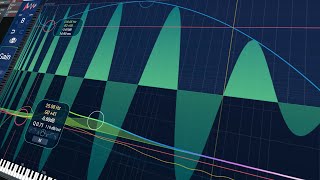
Apr 08, 2024 Tutorial
In this video, I showcase a new plug-in from a German company that costs $22. It is a kick drum generator with a user-friendly interface and precise kick drum generation capabilities. The plug-in allows for easy alignment with the bass and offers unique features such as frequency and gain envelope shaping, as well as an auto gain function.
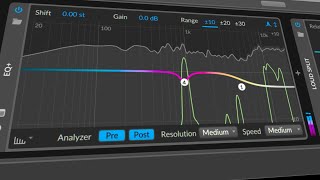
Feb 23, 2024 Tutorial
In my recent video, I received a lot of love, praise, likes, and comments, which warmed my heart. I wanted to continue sharing knowledge about Bitwig Studio and unique ways of eqing. I introduced a visual guide using EQ+ and a loud split device to help identify and adjust frequency distribution, making EQing easier and more efficient.
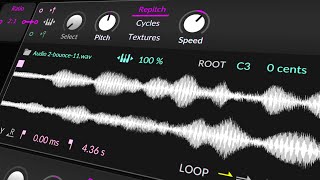
Feb 19, 2024 Tutorial
In this video, I explain how to use frequency modulation (FM) synthesis in Bitwig Studio, showcasing different and unusual ways to apply FM. I demonstrate how to modulate the frequency in a linear way using the speed knob in a sampler, creating harmonic and disharmonic sounds. Additionally, I explore FM techniques using wavetable LFOs, feedback modulation, and modulating the delay time.
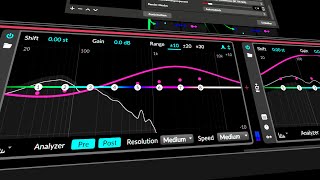
Feb 12, 2024 Tutorial
In this video, I demonstrate creative ideas for using the EQ inside Bitwig Studio. By utilizing the FX grid and voice stacking, I show how to apply polyphonic modulations to the EQ Plus. This technique allows for unique waveforms, modulation offsets, and the ability to sequence and morph between EQ settings.
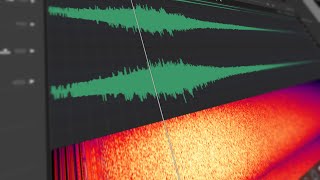
Jan 10, 2024 Tutorial
In this video, I share my process of capturing impulse responses inside Bitwig Studio. I demonstrate how to use a test-tone device to generate the desired impulses, export and edit them in an audio editor, and then use a sampler and convolution device in Bitwig Studio to create unique reverbs. I also explain the importance of combining convolution reverbs with algorithmic reverbs for a more dynamic and realistic sound.
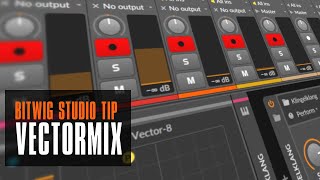
Oct 16, 2023 Tutorial
In this video, I share a useful trick in Bitwig Studio for creating evolving sounds. I remind myself to use the XY Instrument container which allows me to load multiple instruments and fade between them. This technique can be applied to various types of sounds and offers a lot of flexibility in terms of modulating and manipulating the fades.
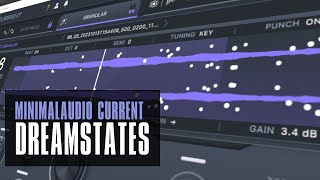
Oct 13, 2023 Tutorial
In this video, I discuss my thoughts on the granular engine in the synth and how I miss having a record button. I demonstrate how I use my vocals recorded in a DAW to create a pad sound, adjusting the pitch and experimenting with various settings. I also showcase the use of wave tables, a morphing filter, LFOs, and effects like reverb and delay to create a textured and evolving sound.
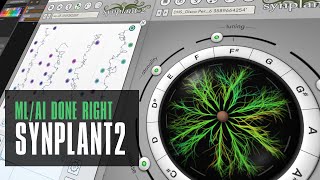
Oct 04, 2023 Tutorial
In my latest video, I discuss SynPlant 2, a groundbreaking synthesizer with the new GenoPatch feature that uses machine learning to create FM patches from samples. This feature allows users to generate multiple FM patches from a single sample, with options to adjust tuning, volume, and grow out different sound variations. I believe this is a game-changing innovation in the world of synthesizers and hope to see other synths incorporate similar features in the future.
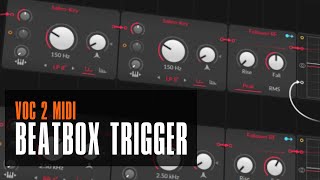
Jun 05, 2023 Tutorial
In this video, I show how to record your microphone and convert it into MIDI notes to trigger random samples in Bitwig Studio. To do this, I use a trigger to trigger the kick drum, snare, and hi-hat samples, and a hardware device to select the microphone input. I also use an auto-leveler with a follower, threshold, and sustainer to amplify the vocals and filter out noise. To separate the sounds, I use a sound key filter with a bandpass, low pass, and high pass, and use logic to exclude certain combinations of triggers. Finally, I use a quantizer in trigger mode to put all the triggers on the grid. Overall, this process requires a lot of tweaking and filtering to find the right sweet spot, but it can be done in Bitwig Studio with some experimentation.
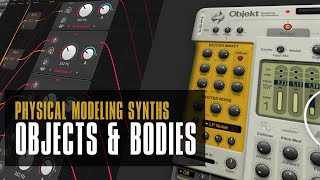
May 11, 2023 Tutorial
In this video, I explain how to make a physical modeling synth in the Reason software. Physical modeling is a way of replicating real-world objects in a synth by modeling their resonances and frequencies. To start building the physical modeling synth, we need to introduce an exciter and use multiple bandpass filters. The resonance frequency of objects is specific to their material, and the frequencies of the overtone change with time. We need to introduce envelopes for each overtone that changes over time. We can use multiple partials and tune the frequencies of the bandpass filters to replicate specific objects' resonances. Loudness is also crucial, and we can use multiple envelopes for each harmonic. We can use a comp filter or use a ratio knob to target specific harmonics. Alternatively, we can introduce all harmonics and remove the ones we don't want. It's an intricate process, but the result is worth the effort.
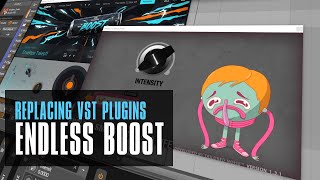
Apr 24, 2023 Tutorial
In this video, I share my process of creating risers and transitioning effects using the global modulator in Bitwig Studio. I was inspired by UJAM's final boost and Data Life's Endless Smile plugins and wanted to replicate the effects in Bitwig. Instead of using manual automation, I used the curve editor to create a ramp that gradually increases the effect's intensity over time. I demonstrated how to apply this technique to individual tracks, such as chords, bass, and percussion, to create more dynamic and interesting effects with precise control. This technique is a great VST replacement and allows for more creative flexibility in creating risers and sweeps in your music.
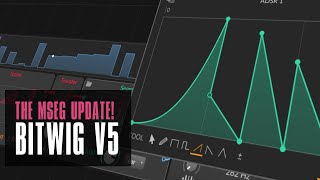
Apr 11, 2023 Tutorial
In this video, I discussed the new features in Bitwig Studio version 5. This includes the new browser, with a compact design and the ability to install packages directly from within the browser. I also discussed the new track modulators and global modulators, which allow users to easily control multiple parameters from the same modulator and access them in the mixing panel. Finally, I talked about the new multi-stage envelope generator, curves and wave table oscillator. These new features make it easier to create interesting sounds and complex modulation patterns.better understand it and provide a proper response?

Apr 05, 2022 Tutorial
In this video, I demonstrated how to use pinging to create various audio effects with short bursts of noise. I showed how to use an EQ with a steep band pass, a Resonator Bank, a Phaser Plus, a Flanger, and an Comb Filter to create different sounds with pinging. I also showed how to use a Tool device to make a kick drum sound shorter, a Grid module to create a noise, and how to use Supermassive to create a resonator bank. Finally, I gave some examples of how to create clicks or excite sounds.
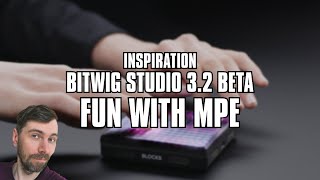
May 06, 2020 Tutorial
In this video, I show how to use the Expressions modulator in Bitwig Studio alongside an MPE controller, such as the ROLI Light Block, to create soundscapes. I explain how to set up the controller and the modulator, and then demonstrate how to use it with the Impulse synth and the Zebra 2 VST plugin. I also provide tips on how to use the modulator with a keyboard and the mod wheel. Overall, the Expressions modulator is a great tool for adding movement and depth to your music.
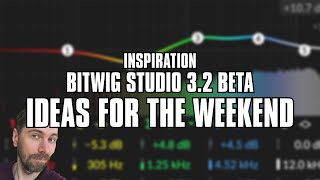
Apr 24, 2020 Tutorial
In this video, I share some tips and ideas on how to use the new features in Bitwig Studio 3.2. I show how to create a bassline using the new arpeggiator and expression modulator, how to create layered instruments with instrument selectors and round-robin, and how to create evolving chords with note FX selector, arpeggiator, and diatonic transposer. I also demonstrate how to create sounds with Poly-Grid, create a reverb effect that only activates when the key is released, and how to create a strumming effect with note delay. These new features offer a lot of possibilities for sound design and creating patterns and chord structures. Using my code "polarity" in the shop can save you 10% on the price while supporting my channel.
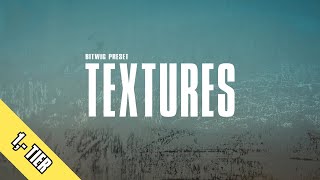
Apr 23, 2020 Tutorial
In this video, I am showcasing my new free preset for adding textures to sounds in Bitwig Studio 3.1. I demonstrate how to use the remote controls to mix in the texture, amplify the texture sample, change the texture, and use pink noise. I also explain how the rise and fall controls work for amplitude modulation and how to use the postfx box for EQ, transient shaping, and peak limiting. The preset is called textures and can be downloaded on my Patreon page for $1 or for free if you are already a patron. I also mention my plans to add more textures samples in the future and ask for feedback on the preset.
More Tags to choose from:
posts Bitwig FromScratch Tutorial German Talk Skyence articles Guidelines Knowledge PDF Brain Neurosience Webtool Tempo Mixing Harmony bitwig-guides Audio-FX Poly-Grid helpers Chords Scales community-report Community music-videos Ambient Hardware Jam Drum-and-Bass Music Mixtape fawm Behringer Moog Retro release Polarity Bandcamp polarity-music Bitwig-2.0 VST-Plugin Audio-Effects Bitwig-3.0 Presets Sampling Generative Melodies Note-Grid Bitwig-3.2 Modulators Bitwig-3.1 Plugins Preset Sound-Design Replace VST Note-FX Polysynth MPE Roli Melda Bitwig-4.4 MinimalAudio Distortion Midi Arturia Groove Drums Filters FX-Grid Bitwig-4.3.4 Physical-Modeling Eurorack Instrument Arrangement Automation Risers Transitions Audio2Midi OpenSource PlugData Reverb Clever-Audio-Plugin-Clap AI download FM-synths machine-learning oscillators soniccharge Sound-Generator SynPlant Synthesizers Compiler Heavy-Compiler Synth Current Granular-Synthesis Pads Vector XY-Instrument Touch-Designer Video-Edit Visuals Extension Beginners Bitwig-5.1 Glitch Sync Delay Signals xlnaudio additive Sequencer Euclidean Bitwig-5.1.2 No-Grid Stock Finishing-Songs Thoughts Browser Jazz M1 Convolution Polyrhythm Polymeter Clip-Launcher AudioThing Lese Techno Modulation Synthwave Routing Spectral tests paulxstretch Triton Grains Patreon Utility Analogue Oeksound Bitwig-5.1.6 Kilohearts Project Bitwig-1.3.16 Tegeler Wavetable tbproaudio Amiga Bitwig-5.1.7 Trance Bitwig-5.2b1 Theming Giveaway Bitwig-5.2b2 Segments Ableton Bitwig-5.2b5 key-tracking EQ zplane Bitwig-5.2b7 Calculations Markov Shift-Register Bitwig-5.2b8 Bitwig-5.2b10 Voice-Stacks Bitwig-5.2b11 Feedback Dynamics Bitwig-5.2b12 Bitwig-5.2b13 Bitwig-5.2 sonnox dadalife Bitwig-5.2.1 Bitwig-5.2.2 Bitwig-5.2.3 Problems Audio-Tracks reaction EDM Bitwig-5.2.4 Kickdrums fft Software Bitwig-5.2.5 process.audio Impulse-Responses Bitwig-5.3b1 Freq-Shifter Bitwig-5.3b2 Bitwig-5.3b3 Bitwig-5.3b4 StateOfBitwig Bitwig-5.3b5 Mastering ControllerScript Bitwig-5.3.2 openDAW Bitwig-5.3b10 Bitwig-5.3.1 Bitwig-5.3.8 Connect-4-12 GRMTools Waveguide reloop Bitwig-5.3.10 Application Bitwig-6b1 Bitwig-6b2 Bitwig-6b3 bitwig-classic-sounddesign bitwig-grid-course



























